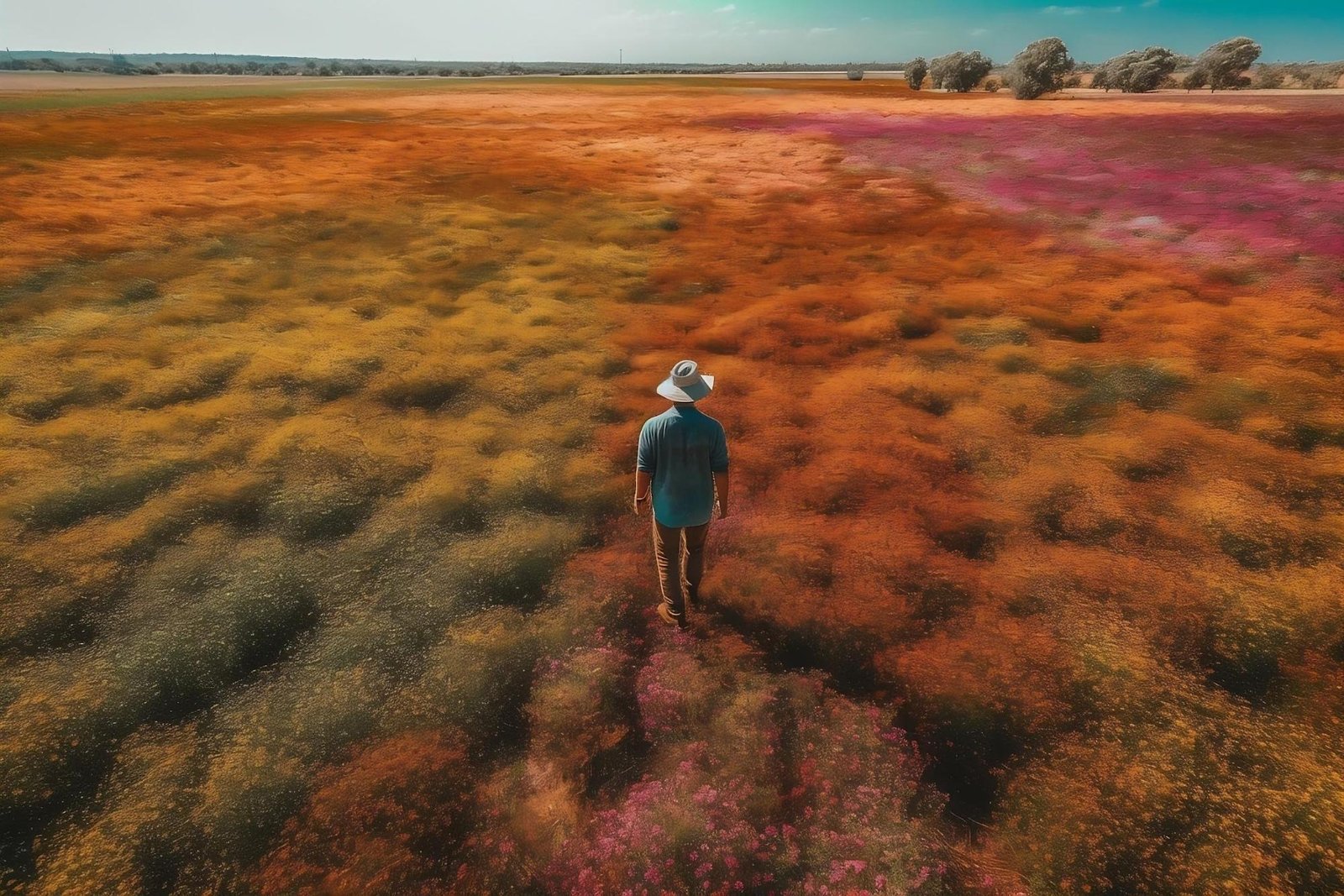
Image: surveyor in green hat with clipboard in field.
BNG has been made a requirement to be legally followed in all new construction projects. It should not be viewed as merely another planning hurdle, but as a significant and real opportunity to push for sustainable designs to come into being.
The essential principle of biodiversity net gain is that any development should leave its site “measurably” better for biodiversity than before.
The Environment Act 2021 brought in a refreshingly straightforward new requirement for planning developments. This is to increase measurable biodiversity on any given site, compared to what existed there before the development, by at least 10 percent on a DEFRA-mandated metric. This is a good law for planners and developers devoted to nature that is somehow still “in balance” with a housing development.
In many planning areas across the UK, BNG is already being put into practice via local planning policies. This tries to do three things: (1) curb the loss of biodiversity; (2) ensure that there’s actually a reported increase in biodiversity; and (3) improve the quality of green space and biodiversity in all kinds of developments.
When it comes to developments, avoiding a net loss is not enough; we need to aim for an overall gain. To achieve this, architects, planners, and wider design and consultancy teams must consider how an intelligent site layout can meet these aims while maintaining site viability.
The Standard Biodiversity Metric Tool
The invaluable Biodiversity Metric tool promotes a smart, iterative biodiversity design process. Rather than simply being a tool that is applied once a design has already been formulated, it can be used in a layout decision-making process. That way, layout decisions can be made that adhere to the “mitigation hierarchy,” as per the National Planning Policy Framework (NPPF). The framework says that, with respect to biodiversity, development decisions should follow this order: avoid, minimise, and offset.
All design teams seek to deliver functionality, good place-making, and the character of the landscape through creative thinking, multifunctional solutions, and sometimes even compromises. They do this until the solutions they reach either work with the build numbers or are supplanted by something that does. All this, of course, occurs under the imperatives of development pressure in England today—the pressure to maximize both financial return and the acreage that can be developed while still managing to do some good in the landscape.
Is balance really found between green space and built forms, or are we just being sold the notion of balance? Inevitably, not every site can achieve the desired net gain within its boundaries. Consequently, many sites must secure offsite compensation for their biodiversity impacts. This offsite compensation can come by securing Biodiversity Units from private sector providers known as Habitat Banks.

Image: surveyor walking through field.
How Habitat Banks Can Help
Sustainable design of world-class quality integrates green and blue infrastructures within a carefully considered public realm. These areas incorporate natural elements, ensuring universal access to high-quality natural experiences for all people, as well as being places that support a wide range of species.
However, ensuring that development and natural infrastructure is compatible with high-value biodiversity is not straightforward. Given how many species and habitat types are sensitive to regular disturbance, achieving compatibility often means zoning certain areas for extended human use.
By creating a national network of Habitat Banks, we have sourced BNG Units for developers. This allows developers anywhere in the UK to access offsite Biodiversity Units, enabling effective compliance with the new, mandatory BNG requirements.
Habitat Banks work towards a large-scale nature-recovery initiative that promises to provide “a measurable uplift in biodiversity value.” It aims to create, over a large area, high-quality habitats for a variety of species. This is done in accordance with better-practice ecological principles, which amount to a “landscape-scale” application.
We estimate that there may be demand for as many as 6,200 offsite BNG Units every year, with a market value of £135 million. Though the price of each BNG Unit will differ depending on where it is located and what kind of habitat it is associated with, we estimate that a Unit goes for somewhere in the region of £20,000 to £25,000.
Habitat Bank for Developers to Limit Risk
Hundreds of millions of pounds are being put into these extraordinary locations to help nature bounce back and flourish, along with giving rural communities a beneficial influx of investment.
The BNG rules can be used to convert these habitats into BNG Units, ready for the developers to use in meeting their BNG requirements. This is a straightforward model whereby the developer pays and, once again, can walk away “risk free.” It is fully compliant with planning legislation and offers the developer both a certain supply and a certain cost. Indeed, the model creates “BNG Unit habitats” in areas where development is permitted, thus ensuring that neither the developer nor the planning authority comes up against any issues.
BNG is developing a private market that renders the economics of biodiversity restoration visible. This is allowing brilliant ecological outcomes to become the norm and is unlocking sustainable-development solutions that make the economy of this country work for everyone.
The Benefits of Early Engagement with Biodiversity Surveyors
Implementing BNG both on and off the targeted sites can be a daunting task. It requires not just good planning but also planning done early in the process. Alongside those two requisites, it also demands expert ecological advice to make it all work, but, for all involved—especially the developers and the ecological consultants—there is much potential upside to making BNG work:
- Architects, developers, and project partners can lessen their effect on biodiversity, keep the need for off-site net gain solutions to a minimum, and best use their available land if they engage with BNG and the Metric early on and repeatedly in a consent journey that is often fraught with risk.
- This can and should provide enough space within which the design, in which many benefits can be overlaid, is genuinely innovative.
- What experienced ecologists say is that retainable habitats should and can be within the site and that appropriate creations of lost habitats can and should be made in the kinds of spaces where they can thrive.
- Also in the remit of an ecologist is advising on how to adapt the landscaping and green space—life enhancers in the right places—to ensure any biodiversity bonuses are maximised.
An extended management plan must be developed for all habitats contributing to BNG calculations. Why? Because developers might otherwise end up needing to buy statutory credits at a price that will make them seem overpriced even when determined under the discount rate for the 30-year plan we might hope would cover the shortfall.
Are you an Architect or Developer looking for more information on BNG design?
An exclusive webinar has been organised with the RIBA Journal, during which the legal ramifications for designers will be brought to light. Better site design, which is informed by BNG, is one way to design “better” to comply with the laws and regulations governing environmental impact.


